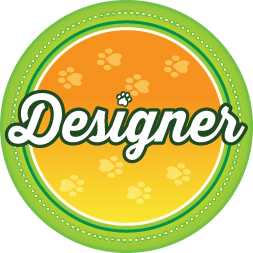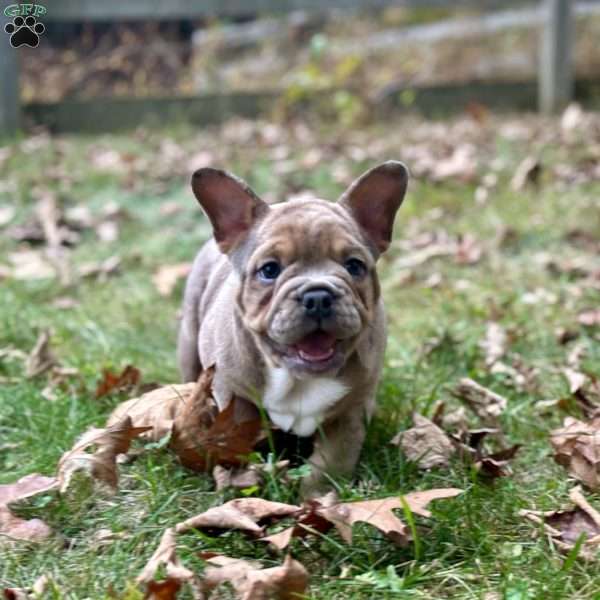
-
Activity Level:
low
-
Shedding Level:
moderate
-
Grooming Level:
moderate
-
Trainability:
moderate
-
Good for Novice Owners:
moderate
-
Adaptability:
moderate
-
Kid/Pet Friendly:
often
-
Prey Drive:
low
-
Watchdog:
chill
- Average Size: Medium
- Average Lifespan: 10-12 Years
- Registered?: aca, other
Frenglish Bulldog Dog Breed Information
Overview
Temperament
Adaptability
Health
Owner Experience
Grooming
Activity Level
Size
Life Span
Did You Know?
A Frenglish Bulldog, or Free-Lance Bulldog or English Bantam Bulldogge, is a cross between a French Bulldog and an English Bulldog or Olde English Bulldogge. Although a mixed-breed dog can inherit any combination of traits from their parent breeds, Freelance Bulldogs tend to be social, friendly, playful, and affectionate dogs that make great family companions.
Although the Freelance Bulldog is not recognized by the American Kennel Club, they are recognized by other dog registries. The American Canine Association, American Canine Hybrid Club, Designer Dogs Kennel Club, and more all recognize the Free-Lance Bulldog.
With some of the most affectionate dog breeds as parents, it’s no surprise that Frenglish Bulldogs tend to be affectionate and social companion dogs. They thrive on attention and affection from their families and love nothing more than being near them.
Well-socialized, they’re known for getting along fantastically with children, other dogs, and other pets. Although they may bark to alert you of strangers and can be initially reserved with them, they tend to warm up quickly once introduced. These dogs tend to be quite social and enjoy being the center of attention.
Frenglish Bulldogs are moderately adaptable dogs. They thrive in larger homes with yards where they can run and also adapt well to apartment living. As long as they get enough daily attention and exercise, they are happy pups. These dogs bond closely with their families and thrive on affection from them. As such, they do not like to be left alone for long periods of time.
Although they do well in most climates, they are still a brachycephalic dog. This means they are even more sensitive to heat than other dogs and are sensitive to the cold. You will have to take extra care to keep your dog cool when outside during warmer seasons and likely will need to bundle up on winter walks to stay warm.
Potential health concerns to be aware of in Frenglish Bulldogs can include elbow dysplasia, hip dysplasia, skin problems, heart issues, cherry eye, entropion, cataracts, and respiratory issues. Good breeding practices and the health of the parents make a big difference in the health of Frenglish Bulldog puppies.
Reputable breeders will screen their dogs to make sure they are not passing preventable issues on to puppies. Make sure you ask about the health and genetic history of both parents. You can also ask about any health tests or clearances that have been done.
Although bulldogs can be stubborn at times, they also tend to be eager to please. This makes the English Bulldog one of the best dog breeds for first-time owners and the same is true for Frenglish Bulldogs. Provided training is consistent, clear, and focused on positive praise and reward, Frenglish Bulldogs tend to respond well; you may just need to be patient and consistent to overcome a stubborn streak or two.
Individual dogs will vary and first-time owners should still be prepared for the possibility of puppy training classes in case they face challenges in training. Reinforcing training and socialization are just a few benefits of puppy training classes, so they can be a good idea even if you don’t necessarily need them for help with training.
Frenglish Bulldogs will have a short coat that will shed moderately year-round. Weekly brushing and the occasional bath as needed are usually enough to keep the Frenglish coat looking great. A grooming glove, slicker brush, a comb, and a round brush or rubber brush are great dog grooming brushes to have on hand. It’s also not a bad idea to have a drool cloth in reach, especially after this dog has been drinking water.
In addition to coat care, you will also need to take care of your Frenglish Bulldog’s nails, ears, face wrinkles, and teeth. Cutting nails once or twice monthly keeps them from growing too long. Checking ears weekly and carefully cleaning them as needed helps prevent ear infections. Checking, cleaning, and making sure skin wrinkles look good can help prevent skin irritation.
Good dental care for dogs early and consistently throughout their lives is essential for helping to prevent painful dental diseases later in life. Brushing teeth every day, in addition to cleanings at the vet when needed, is ideal.
Although they will be energetic when they play, Frenglish Bulldogs tend to sit in a low to moderate activity range and can be one of the laziest dog breeds if you let them. Daily walks plus some playtime are usually enough to keep this dog happy and healthy.
They can be up for more activity if you are, you will just need to be careful about overdoing it to make sure they don’t overheat. Working in short bursts and taking breaks are some safe ways to exercise flat-faced dogs. Some bulldogs even compete in dog sports! Just make sure you keep activities low-impact until puppies finish growing to avoid damage to developing bones and joints.
Fully-grown Frenglish Bulldogs usually stand 13-15 inches tall and weigh 28-55 pounds.
Frenglish Bulldogs generally live for 10-12 years on average.
Because they are so “head-heavy”, French Bulldogs have trouble swimming and staying afloat without a life vest. Despite their larger build, Frenglish Bulldogs may run into the same challenge.
This doesn’t mean they can’t swim; it just means they need to always be wearing a life vest for dogs and should not be left unattended around bodies of water. These are good safety tips for swimming with dogs anyway, but are essential to keep in mind for these dogs.





